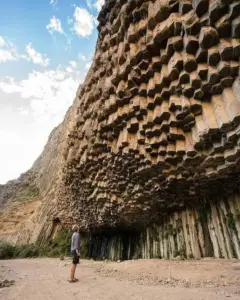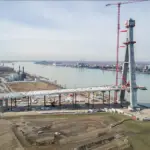Infrastructure design relies heavily on collaboration. A key partnership driving successful infrastructure projects are architects and civil engineers. Architects provide expertise in spatial design, aesthetics, user experience, user interaction analysis and user testing. On the other hand, civil engineers bring structural integrity knowledge, construction techniques expertise as well as knowledge of structural integrity requirements to achieve innovative and functional infrastructure designs.
Collaboration among these two groups plays an essential role in creating well-designed, resilient infrastructure which meets society’s needs.

Why Collaboration is crucial?
Collaboration between architects and civil engineers begins at an early stage of a project in its conceptualization and design stages.
Architects with their deep understanding of aesthetics and user requirements establish a vision for their project that includes factors like functionality, aesthetics, cultural context and user experience; translating all these aspects into a conceptual design which captures its intended purpose and aspirations for infrastructure development.
Cooperation between architects and civil engineers during this phase is paramount to ensure that architectural vision meets both structural and functional requirements of a project.
Perth architects and interiors utilize civil engineers’ technical expertise to evaluate whether design concepts meet their feasibility criteria – factors like building codes, safety regulations, environmental impact assessments, construction methods etc are considered by engineers in their analysis.
In collaboration, architects can refine designs in order to find an equilibrium between aesthetics and viability of design concepts; ultimately leading to designs which are both visually attractive yet structurally sound.
Also Read: Katni marble flooring disadvantages (Must Know)
Detailed design
Collaboration between architects and civil engineers becomes essential during the detailed design and construction documentation stages.
Like Us on Facebook!
Civil engineers work closely with architects to translate design concepts into detailed construction plans, specifications, technical drawings, as well as provide input on structural systems, materials, and construction techniques – ensuring that designs can be implemented while meeting all necessary standards and regulations.
Subscribe Us on YouTube!
Energy Efficient systems
Perth architects and interiors play an integral part in integrating sustainable design principles into infrastructure projects.
As sustainability becomes an ever more essential factor for infrastructure development, architects collaborate with civil engineers to integrate energy-efficient systems, renewable energy sources and eco-friendly materials into designs – which help optimize energy consumption, enhance indoor environmental quality and minimize carbon footprints – thus creating infrastructure which is both visually pleasing and ecologically responsible.
Functional requirements
Cooperation between architects and civil engineers extends to meeting the functional requirements of infrastructure. Architects collaborate closely with civil engineers to ensure that designs meet intended uses for facilities; this includes factors like spatial planning, circulation patterns, accessibility and user experience.
By working together from early stages onwards architects and civil engineers can optimize layout and functionality resulting in spaces which are efficient yet user-friendly as well as adaptable for future needs.
Cost & Budget
Collaboration between architects and civil engineers also involves taking cost and budget constraints into account. While architects typically focus on designing visually striking, functional designs, civil engineers provide valuable input on cost-effective construction methods, materials, and systems.
Through collaborative discussions and value engineering exercises, both parties collaborate together to maximize project costs without jeopardizing design intent or quality infrastructure infrastructure projects.
Design specifications
As construction proceeds, architects and civil engineers work collaboratively to ensure that the project adheres to its design specifications. Working closely with contractors, project managers and other stakeholders they address any design-related issues as they arise during construction; architects providing ongoing design support such as clarification and interpretation while civil engineers overseeing its compliance with structural requirements and quality standards.
Evaluation and Final Inspection
Architecture and civil engineering’s collaboration goes well beyond design and construction stages. After completion, architects and civil engineers join forces to evaluate infrastructure performance and address any maintenance or operational issues. Periodic inspections and assessments ensure that infrastructure meets intended standards of performance while any necessary adjustments or improvements can be identified and implemented expeditiously to increase its longevity and efficiency.
Collaborative efforts between architects and civil engineers promote innovation and creativity in infrastructure design. By pooling their collective perspectives and areas of expertise, they can explore novel ideas, materials, technologies that push the limits of what is possible; develop solutions that are not only aesthetically pleasing but also technologically advanced, sustainable, resilient – ultimately setting the stage for future innovation in infrastructure design.
Effective collaboration between architects and civil engineers requires open communication, mutual respect, and a shared vision for their project. Regular meetings, workshops, and design charrettes provide ample opportunity for brainstorming, exchanging ideas, and discussing any challenges that may arise. Both parties should remain receptive to feedback while willing to compromise when necessary – ultimately striving towards producing optimal results for the project as a whole.
Beyond civil engineering
Architecture and civil engineering work collaboratively on projects by coordinating with various disciplines and stakeholders involved, such as structural engineers, mechanical engineers, electrical engineers, landscape architects, environmental consultants and urban planners – providing a holistic approach to infrastructure design while taking all relevant factors into consideration and optimizing overall performance and sustainability of each project.
The bottom line
In sum, collaboration between architects and civil engineers – in this instance Perth architects and interiors – is integral for the successful design and implementation of infrastructure projects.
By combining their respective expertise, architects and civil engineers collaborate on infrastructure that is not only visually appealing but also structurally sound, functionally efficient, sustainable and resilient. architects and civil engineers work collaboratively to ensure that each design meets project goals while adhering to safety, regulatory and energy consumption requirements as well as providing positive user experiences.
Through effective collaboration, architects and civil engineers are helping create infrastructure which enhances built environments while improving quality of life while supporting sustainable development for present and future generations.




















